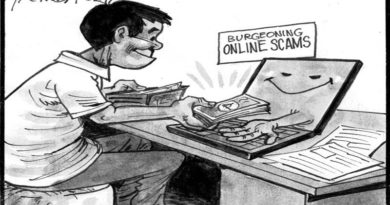OP-ED: Criminalise torture now
EDITORIAL
Criminalise torture now
.
Torture allegedly committed by soldiers and police officers in Thailand against detainees in recent years has usually happened behind closed doors, involving techniques that leave no bruises or visible wounds. This fact provides a strong enough reason for one to suspect whether the army’s detention of insurgent suspect Abdulloh Esormusor on Saturday night — that resulted in him suffering a cerebral oedema and falling unconscious — involved torture of some kind.
Since being rushed to hospital from Ingkayutthaboriharn military camp in Pattani early on Sunday morning, Mr Abdulloh has been on life support.
He was arrested at his home on Saturday after a leading rebel implicated him in insurgent activities. The authorities then took him to the military camp for questioning.
Before his detention, he was physically fit, according to a statement by the military-led Internal Security Operations Command (Isoc). After falling unconscious, he had no bruises, but his brain had swollen, perhaps the result of a prolonged oxygen shortage.
That leaves the question of what acts could have caused the oxygen deprivation and whether any of them was used as a method of interrogating Mr Abdulloh.
———

The Danish Institute Against Torture, which outlines facts about torture methods on its website, specifies dry asphyxiation as a “clean” torture technique that leaves no or few visible marks on the body, rendering it difficult to detect. This technique employs different methods including covering the head with a bag or mask.
That sounds barbaric. Unfortunately, oxygen deprivation is a torture method used by Thai security officers aiming to obtain information or confessions in the deep South, according to a 2016 report by three Thai activists who documented 54 cases of torture in the region between 2014-2015. The report says plastic garbage bags were used for this purpose.
For now, the answer as to what happened behind closed doors during the detention of Mr Abdulloh remains a mystery, partly because authorities claimed that CCTV cameras installed at the detention facility malfunctioned at the time. To many, this claim is unconvincing because that would mean lax security at the military base.
———

Earlier, a similar and equally weak claim was used by the military when it failed to provide the police with CCTV footage of the scene where the extra-judicial killing of Lahu activist Chaiyaphum Pasae by soldiers took place in Chiang Mai in 2017.
Even though Isoc pledged to conduct in inquiry into the case, many remained sceptical. Claims of torture or enforced disappearances have been made against security officers in Thailand, especially since violence flared in the deep South in 2004. However, they have rarely been seriously investigated by independent bodies and ended up seemingly as cases of impunity.
Since 1980, there have been over 80 confirmed enforced disappearance cases in the country, with many victims believed to have been murdered by state officials.
Thailand must criminalise torture and enforced disappearances by passing the Torture and Enforced Disappearance Prevention and Suppression Bill.
At the same time, the military must impose strict regulations that require the use of properly functioning CCTV cameras at all detention facilities and forbid barbarous mistreatment of individuals under state custody. What happened to Mr Abdulloh at the military base must not remain a mystery and become yet another case of impunity.
EDITORIAL
BANGKOK POST
———

.

All photographs, news, editorials, opinions, information, data, others have been taken from the Internet ..aseanews.net | [email protected]
.|.For comments, Email to :D’Equalizer | [email protected] | Contributor










